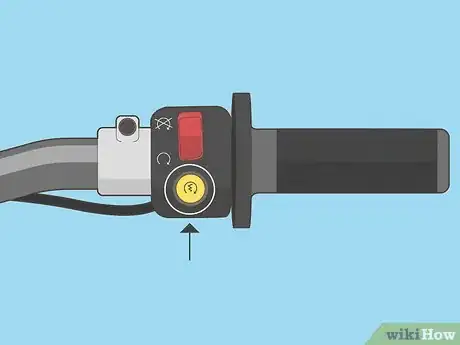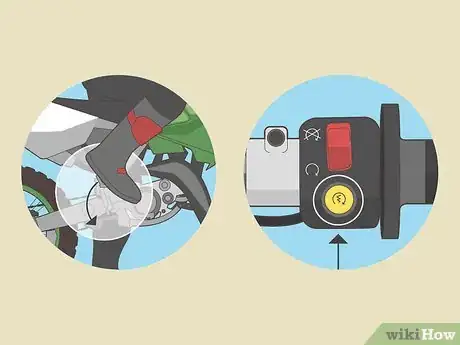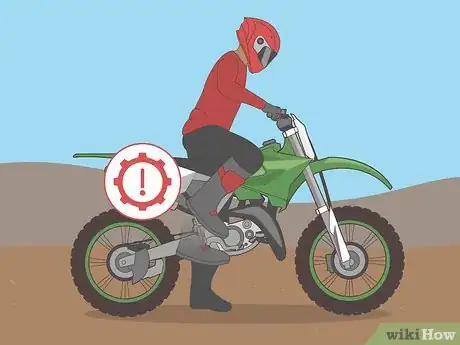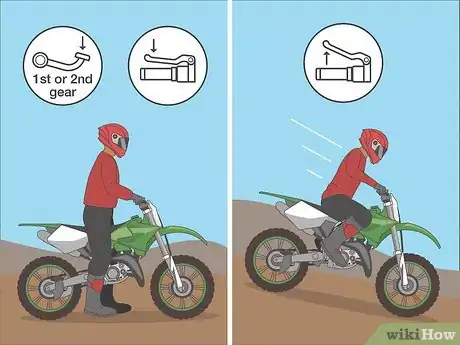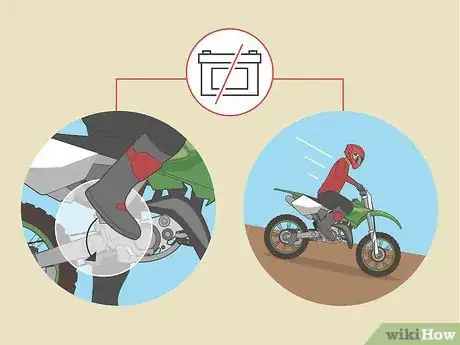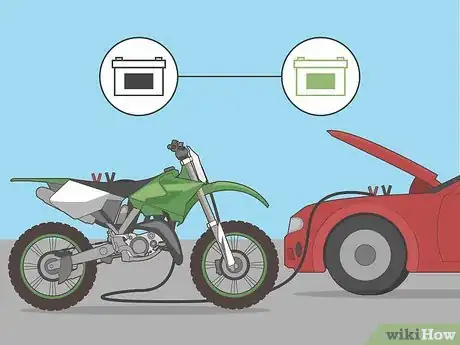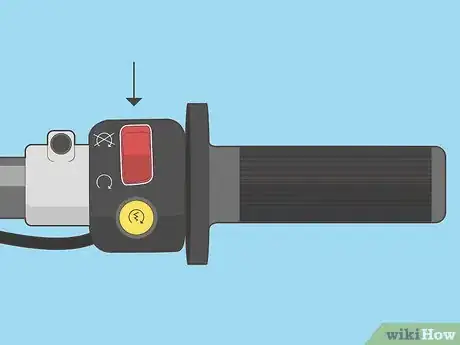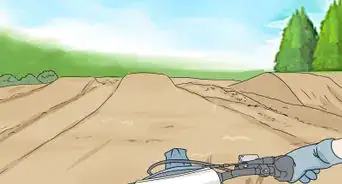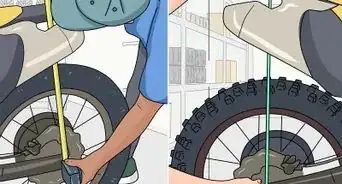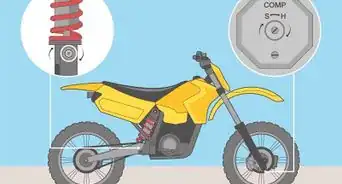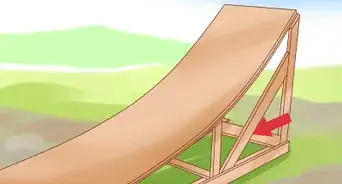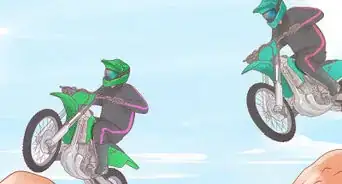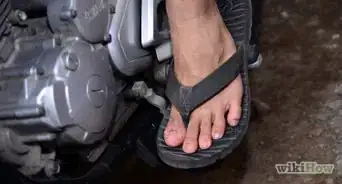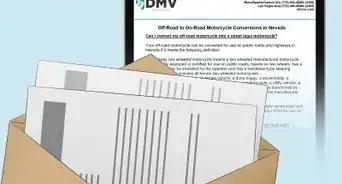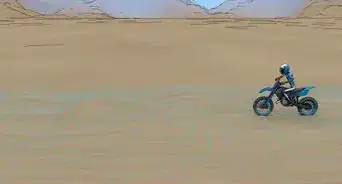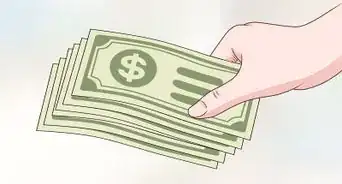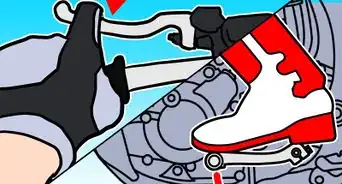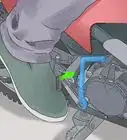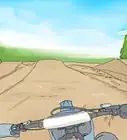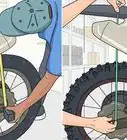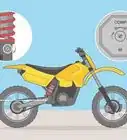This article was co-authored by wikiHow staff writer, Christopher M. Osborne, PhD. Christopher Osborne has been a wikiHow Content Creator since 2015. He is also a historian who holds a PhD from The University of Notre Dame and has taught at universities in and around Pittsburgh, PA. His scholarly publications and presentations focus on his research interests in early American history, but Chris also enjoys the challenges and rewards of writing wikiHow articles on a wide range of subjects.
There are 8 references cited in this article, which can be found at the bottom of the page.
This article has been viewed 19,987 times.
Learn more...
Many dirt bikes now start with the simple push of a button, but firing up the engine by stomping down on the “kicker” is also still common. But what do you do if your kicker is broken? Or if your battery is dead? Or if you just can’t figure out why your bike won’t start? Keep reading to get answers to several of your most likely questions—then go hit the dirt bike track with confidence!
Steps
How do you start up with a dead battery?
-
1Kick starting and bump starting both work with a dead battery. If your bike has a kicker, use it to start up the engine without the battery and then recharge the battery by running the bike. Bump starting the bike works if it doesn’t have a kicker or if the kicker is broken. In each of these cases, follow the instructions provided elsewhere in this wikiHow article.[8]
-
2Jump start the bike with a portable motorcycle battery charger. Portable battery chargers (jump starters) are small, lightweight, and can really help out in a pinch, so think about bringing one along whenever you venture out on your dirtbike. To use the portable jumper, put the red clamp on the battery’s positive terminal, then the black clamp on the negative terminal. Turn on the portable jumper and start your dirt bike as normal. Disconnect the black (negative) clamp and then the red (positive) clamp.
- Most portable jump starters intended for cars and trucks also work with dirt bikes and other motorcycles. However, the clamps are larger and more difficult to put on a smaller bike battery without accidentally touching surrounding metal and causing potentially dangerous sparking. It’s best to use a jumper that’s specifically meant for motorcycles.
-
3Jump start your bike with a second bike if you’re not riding alone. Using a portable jump starter is a bit easier and safer, but this method works as well. To jump start your dirt bike with another dirt bike, connect the motorcycle jumper cables in the following order: red clamp to your bike battery’s positive terminal; red clamp to the other battery’s positive terminal; black clamp to the other battery’s negative terminal; black clamp to a bare metal surface on your bike or, if necessary, to your battery’s negative terminal. Start the second bike, then your bike, then disconnect the cables in reverse order.[9]
References
- ↑ https://motocrosshideout.com/how-to-start-a-dirt-bike/
- ↑ https://www.dirtbikeplanet.com/electric-start-vs-kick-start-whats-best-to-have-on-your-dirt-bike/
- ↑ https://www.dirtbikeplanet.com/electric-start-vs-kick-start-whats-best-to-have-on-your-dirt-bike/
- ↑ https://www.motosport.com/blog/help-my-dirt-bike-wont-start
- ↑ https://www.motosport.com/blog/how-to-bump-start-a-dirt-bike
- ↑ https://motocrosshideout.com/how-to-start-a-dirt-bike/
- ↑ https://motorbikewriter.com/jump-start-dead-bike/
- ↑ https://motocrosshideout.com/how-to-start-a-dirt-bike/
- ↑ https://www.revzilla.com/common-tread/how-to-jump-start-a-motorcycle

